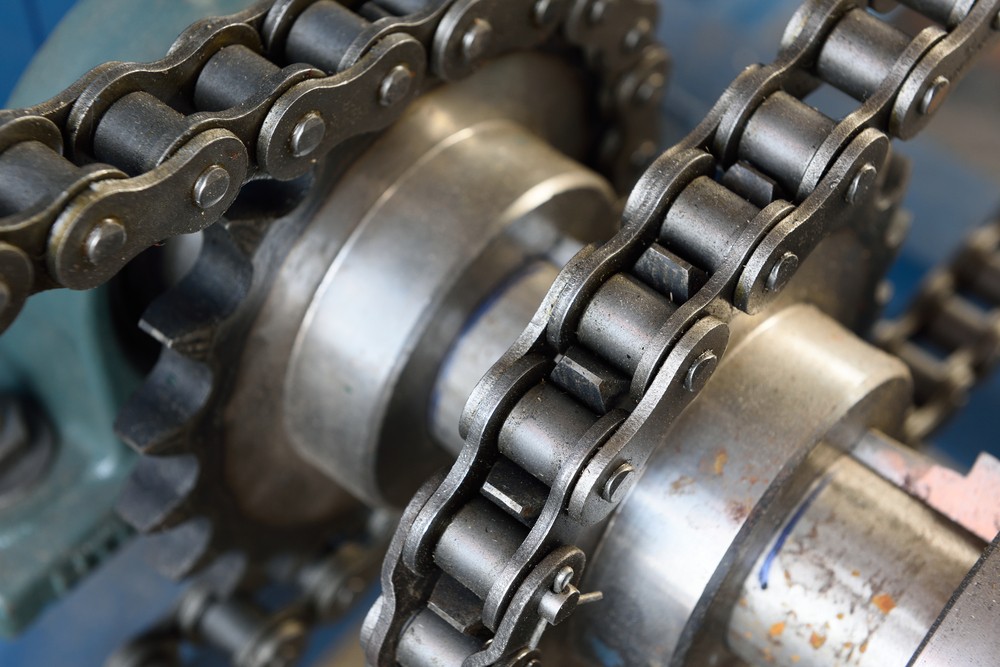5 Common Factors Affecting Exposed Lubricated Components

Lubrication is one of the fundamental maintenance tasks in any factory. Greasing components with the right lubricant at appropriate intervals is the first line of defense against friction, heat, and a host of other problems that invariably lead to breakdown.
While housings protect most lubricated components from contamination, some pieces of equipment operate with essential moving parts fully exposed. Maintenance technicians must give them special attention and ensure everyday detractors don’t cause premature failure for exposed lubricated components.
Identify exposed, lubricated components
Look around the factory floor, and you’ll see several key machines with exposed mechanical elements lubricated to reduce wear from friction. There’s no better example than chain-driven conveyors. These installations are the literal drivers of a value stream, moving product through production or assembly processes. And keeping everything running comes down to proper lubrication for the conveyor’s chain.
Conveyors are far from the only example. Anywhere there are moving parts, there’s a threat of friction. Maintenance teams must identify these points and build them into timely maintenance action plans — whether it’s routine inspection or recurring service tasks to clean and relubricate equipment.

Beware these factory detractors
While housings tend to protect critical lubrication points, including bearings, exposed components face the constant danger of contamination in harsh factory environments. Some of the common detractors affecting exposed lubrication points include:
- Dust and microscopic debris. Without the shielding provided by a housing, airborne particles get stuck in lubricants, leading to gum-ups and increased viscosity.
- Friction from different materials. Exposed components typically interact with multiple materials (e.g., conveyors), which create varying degrees of friction.
- Ambient heat. Exposed lubrication is subject to the temperature of its surrounding environment, which could be quite hot and lead to lubrication degradation.
- Environmental moisture. In the same way environmental heat affects the integrity of lubricants, environmental moisture can compromise lubricant efficacy.
- Mechanical interruption. Without the protection offered by containment housing, any number of bumps, jarring, or general interaction can affect lubricated components.
Some or all these detractors are likely present in any factory, which makes monitoring the condition of exposed lubrication paramount. Don’t wait for noises, mechanical indicators, or smells to indicate heat and friction. Identify and observe these detractors and their effects on lubricated components.

Staying ahead of lubrication issues
Supporting the continuous function and reliability of lubricated components requires a coordinated approach to proactive equipment maintenance. Where lubricant can’t be protected by housings or coverings, consider the following tips:
- Explore engineered lubricants designed to safeguard against common detractors.
- Develop proactive inspection schedules to quantify lubricant degradation.
- Develop preventive maintenance schedules adjusted to the timeline of lubricant degradation.
- Avoid under or over greasing. Lubricant amounts should be consistent with operational demands.
- Give key lubrication points a wide berth with designated pathways to limit environmental detractors.
The maintenance demands of an exposed lubricated element will be higher than those for isolated or contained components. It’s up to manufacturers to recognize factory specific threats to exposed lubrication and establish proactive approaches for mitigating detractors while preserving lubricant integrity.
